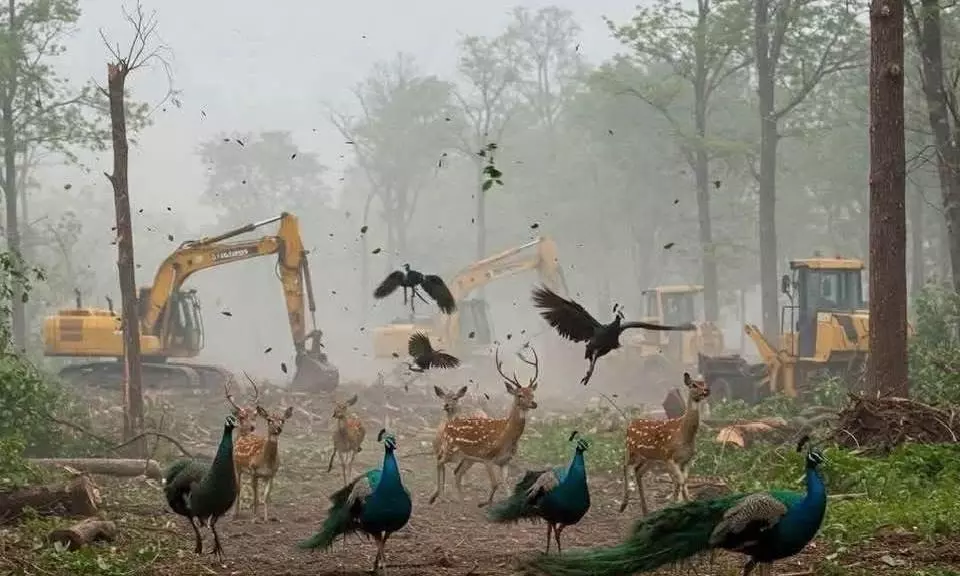AI is the new medium for social media protest
The tool, while powerful, is blurring the line between metaphor and message as AI here is offering immediacy, but is also opening the door to confusion

HYDERABAD: AI content is fast becoming a political tool in the protest of University of Hyderabad (UoH). One particularly sinister image, shared by a political party, shows a caricatured graphic of the Chief Minister surrounded by machines and dead animals, a reference to the fake dead deer video that’s gone viral.
The picture of the deer, claimed to have died during land clearance, was actually from 2019. Some deleted the image, but others let it linger.
The tool, while powerful, is blurring the line between metaphor and message as AI here is offering immediacy, but is also opening the door to confusion. Mislabelled or misused visuals risk undermining genuine protest.
One image showed deer and a peacock facing a row of JCBs beneath a still blue sky. It wasn’t real, it was AI-generated. It didn’t claim to be true, but it moved people, as artificial intelligence became a new medium for social media protest.
The protest over the auction of 400 acres of wild land and its proposed clearing for IT parks has triggered anger on campus and outside. Students and activists began using AI to create visuals. The tools allowed anyone to generate powerful images quickly, some posters imagined destruction, while others projected warning. These weren’t meant to prove harm, but to show what it might look like.
AI offered a new way to express concern. In minutes, protestors could produce visuals that might otherwise take days. The tools levelled the field, art became more accessible and thereby the reach widened.
Rachana Reddy, a representative from NSUI HCU, acknowledged the tension around how the protest was being represented online. “HCUSU never called us or ABVP,” she said. “There’s internal politics. We’ve been eliminated from campus politics, but we were always there for the cause. However, there are these exaggerated media images being used as a vendetta by opposition parties.”
Many of the visuals, she added, had nothing to do with the protestors themselves. They originated outside campus and were used by others to push political blame.
Beyond the images, the political consequences were growing. Public voices, including actor Prakash Raj, YouTuber Dhruv Rathee and commentators like Nayini Anurag Reddy began sharing the AI images to describe the situation as a national environmental concern.
A viral thread asked Congress leader Rahul Gandhi to intervene, and another post broke down how the damage could be reversed. Even AI accounts like Grok joined the conversation, not to create visuals this time but to describe the biodiversity lost and call for conservation over development.
The protest has gone visual. Some images are metaphors, others misleading. What remains unchanged is the ground reality. The terrain is threatened. The biodiversity is documented. The machines are real. AI may help draw attention, but it cannot replace truth.
